

From this photo you can see just how steep the cliff is that the expedition group is standing on. The photographer is only about ten feet from the Colombian marine standing in the foreground (with his shirt eaten away by land crabs on Malpelo). The Samsonite suitcase to the bottom right was Bob Denniston's, a man who preferred to travel in style, even to Malpelo.
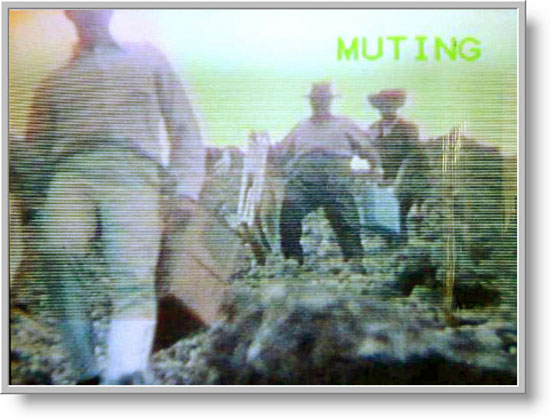
Still capture of an 8mm film. In this photo you see the steep incline of the mountain. It is a 500 foot climb up to where the operating positions were located. Luis, HK5ACI is in the middle of this group. Carlos Fonseca TI2CF in the foreground.
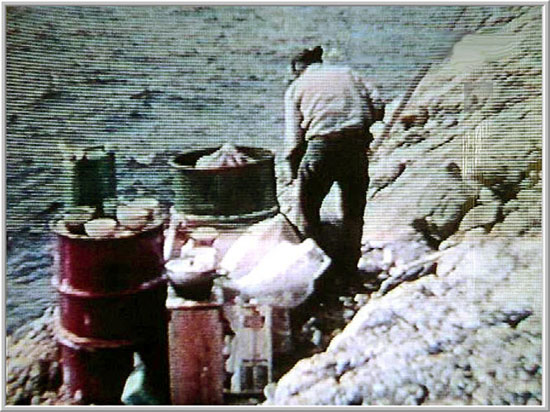
This was one of two very small storage areas near the ocean where we could store gasoline and water. It was a small ledge about 30 feet above sea level. It was a naturally formed flat area that did not need explosives to clear the area and make it a ledge. A 55-gallon barrel of water weighs 660 lbs. A similar barrel of gas weight a little less. It took real muscle to move these 55-gallon drums up to this level on the ledge. The navy man you see was also a signalman who used semaphore to communicate with the Colombian destroyer Almirante Padilla that transported the DXpedition members to Malpelo in 1969.
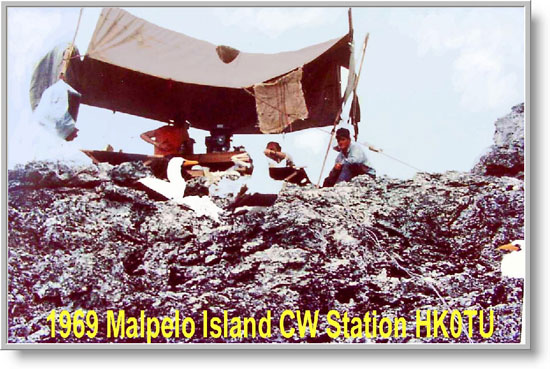
This is the CW station on Malpelo. Just a few feet behind the tent is a 500 foot drop off into the ocean. To the far right is a Colombian navy enlisted man assigned to assist the DXpedition. To his right is Bob Denniston - W0DX. Operating the Drake twins CW station is Enos Schera W4VPD. In the center and to the far right you see ocean birds that nested every where you might possibly find a foot hold or flat area to walk. There were thousands and thousands of these birds all over the island. In fact, some parts of the island looked white where they clustered together. There obviously were no good grounds for this operation. The island is nothing but porous lava stone structure. There is no vegetation whatsoever. These birds leave early in the morning to feed at sea and return at various hours throughout the day. They often flew passes near the tents and the antennas which worried some of us that they might fly to close or might try to perch on the 3-element beams. All food stuffs and supplies had to be suspended from the tent or tarp structure so land crabs would not get into them. Water was rationed. The men ate K-rations during the expedition. These had been donated by the U.S. Army at the Canal Zone through the good offices of the Defense Attache office in Bogota, Colombia. The tarps were dontated by USAID. The Colombian navy provided the fresh water. Food was warmed by placing it on top of either of the two gasoline generators.
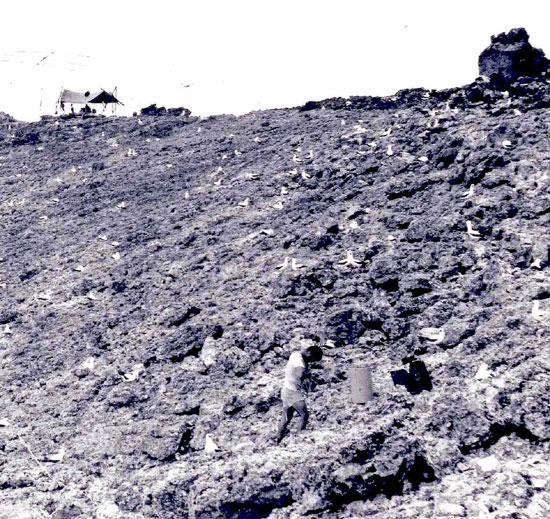
The next image shows just how rough and jagged the surface of these lava fields are to walk on. You can see the number of birds and the fact there are no trails or paths to walk on. In the view below, the CW station which had two sets of Drake twins, can be seen. This area had perhaps the least dense concentration of birds. This is the only half-way level area we found on the island. The man in the foreground is a Colombian Marine who was tending to the generator plant.
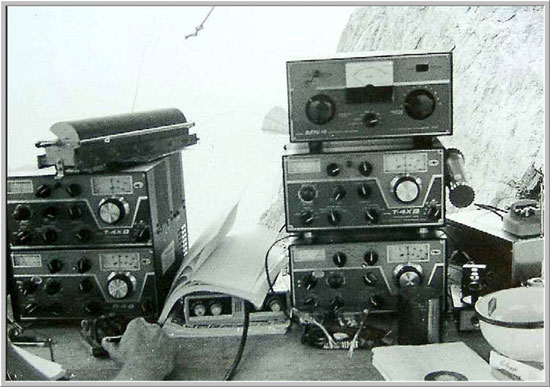
This is the only photo that gives some appreciation of the danger of operating the CW station on Malpelo in Feb. 1969. In the background to the top right you see the sheer cliff that drops off into the ocean 500 feet below. The selection of this site was due to the fact that it was the only location with a northeast facing towards Japan. The Drake equipment worked flawlessly throughout the Malpelo expedition. The open air capacitor was used as an antenna tuner for 160 meters. The CW station ran continuously. It was operated by W4VPD Enos Schera, K4DQS Dale Streiter , and W0DX Bob Denniston. The only thing between the equipment and the sky was an open air tarp. It did not rain during the time the DXpedition operated. One evening the president of Colombia spoke to the amateurs and to the nation on public radio and congratulated them on a successful DXpedition. That meant a great deal to all of them.
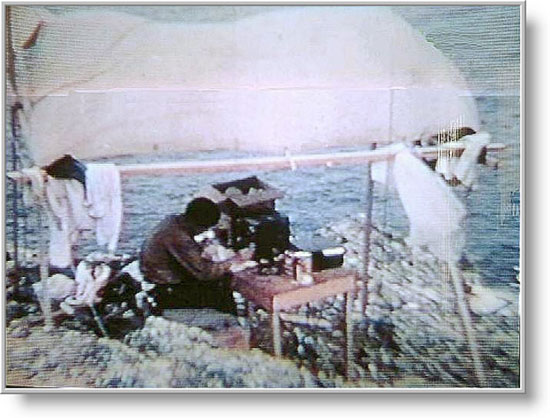
This is the SSB station with Don Blankenship K6JGS/HK3 (now W4PUL) operating. What the photo depicts is the very steep drop off to the ocean some 500 feet below. It is almost a sheer drop to the ocean floor. There is just barely enough room for the table to be positioned on the small ledge. The slope down and up is about 60 to 80 degrees. Finding a place for a sleeping cot was a real problem. You often slept sideways in fear of rolling off the cot and down the mountain. In the foreground, but not easily discernible are Drake twins. The generator plant is about 100 feet away. This is looking south. Luckily the winds were never strong enough to loft the canvas shelter and blow it away. Meals were K-rations. Water was rationed. The destroyer had left the amateur radio group to fend for themselves while it departed for Colombia to carry two seriously injured and near death radio amateurs who fell off the island the day before. Communications with the ship during the landing and departure was via semaphore flags. This is why the navy enlisted man came aboard the island. We had no radio comms with the destroyer. The bathroom facilities were very much a public affair. The idea was to get as close to the ledge of the cliff as possible and leave your deposit reasonable far enough away. The land crabs would quickly find your deposit within minutes and remove it. Had there been any rain whatsoever the stations would likely have been soaked. However, we did have plastic sheeting to cover the equipment. The guy wires for the tent were simply tied around lava rock and this held tightly without any problems. However, the land crabs would try to eat the nylon guy wires.
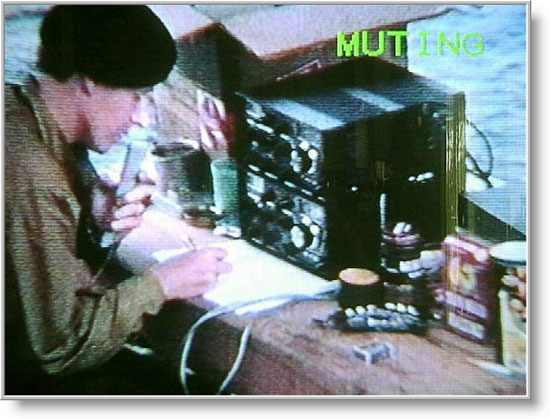

There were no logging computers. The Drake transmitter ran 100 watts input barefoot. The antenna was a 3-element beam facing south, west and east. The north was blocked by a massive mountain another 350 feet above the operating site. Operators worked, slept, and ate right where you see this operating position.
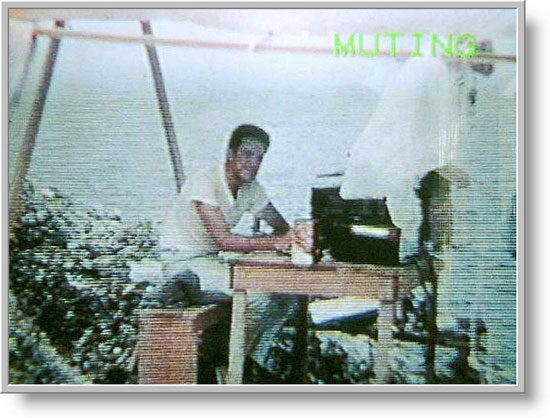
Carlos Fonseca, TI2CF -HK3VA and TI9CF operating the SSB station.

The operating sites were just left of the number 8 where it says Peak 845. The ocean depths are believe to be in fathoms.

CW Station HK0TU - Enos Schera W4VPD at the op position with Dale Streiter K4DQS in the background jury rigging the 160 meter antenna. Directly behind Dale was a 500 drop off into the ocean. It was not for the faint hearted to stand where Dale was positioned. You could easily spit into the ocean 500 feet below.
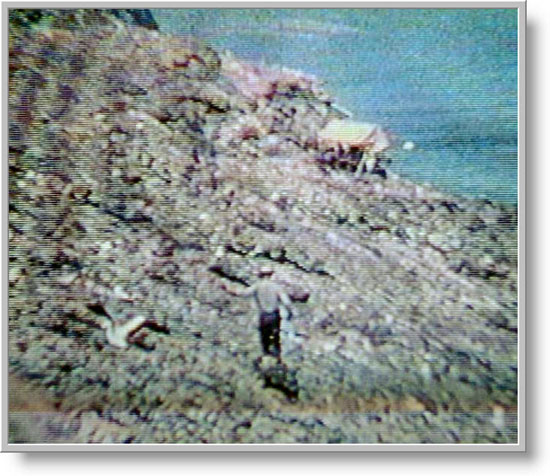
Dale Steiter K4DQS walking the treacherous lava field from the CW to the SSB station. The walk took about 15 to 30 minutes. Each step had to be measured and carefully placed so as not to sprain an ankle or break a foot.
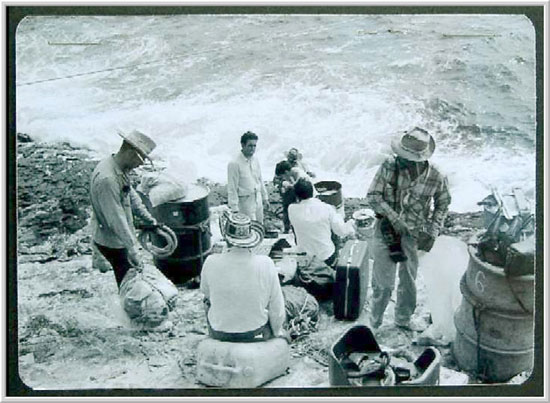
The FBIS office in Cali sent a man from VOA to accompany and photograph the DXpedition. He was not a ham but his VOA boss was. You see him to the right with the straw hat. He interviewed each of the hams to obtain material for a Voice of America broadcast about this exciting adventure and the importance of amateur radio in providing emergency communications services. To the left with the straw hat is Dale Streiter K4DQS. Facing the camera is Carlos Fonseca, TI2CF. This was the afternoon of the departure when the weather turned very bad and sea swells 20 and 30 feet high occurred.
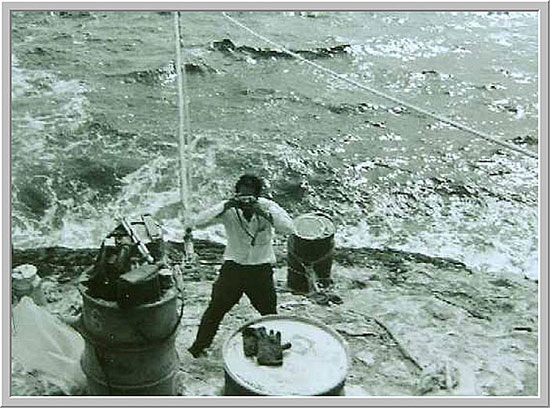
Many of the photos taken of the expedition were provided by Enos Shera W4VPD seen here. You can see just how steep the slope was where the person taking this photo was positioned above Enos. In the background you see the bamboo boom extended over the ocean below. The distance to the water below is about 150 feet -- straight down.